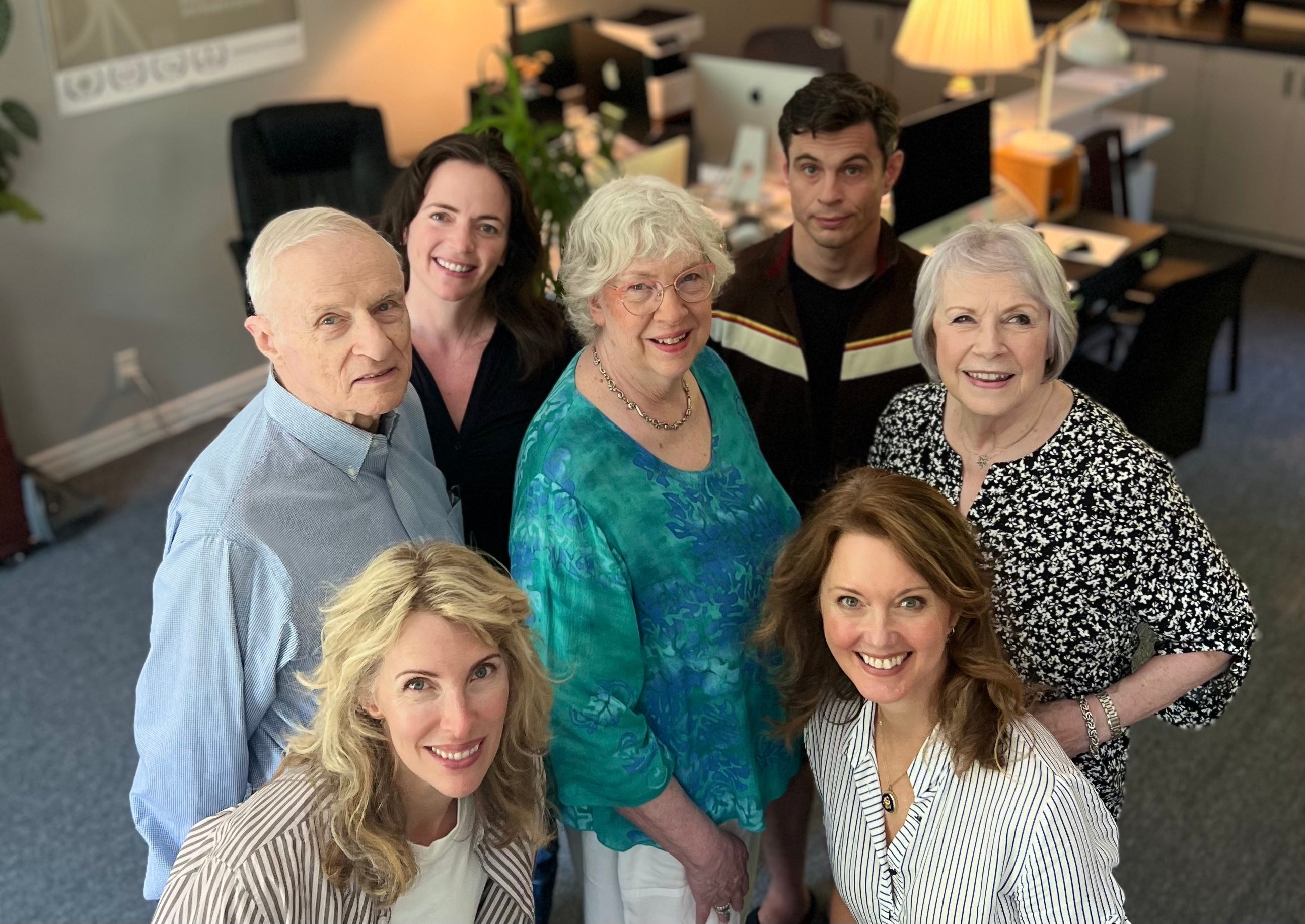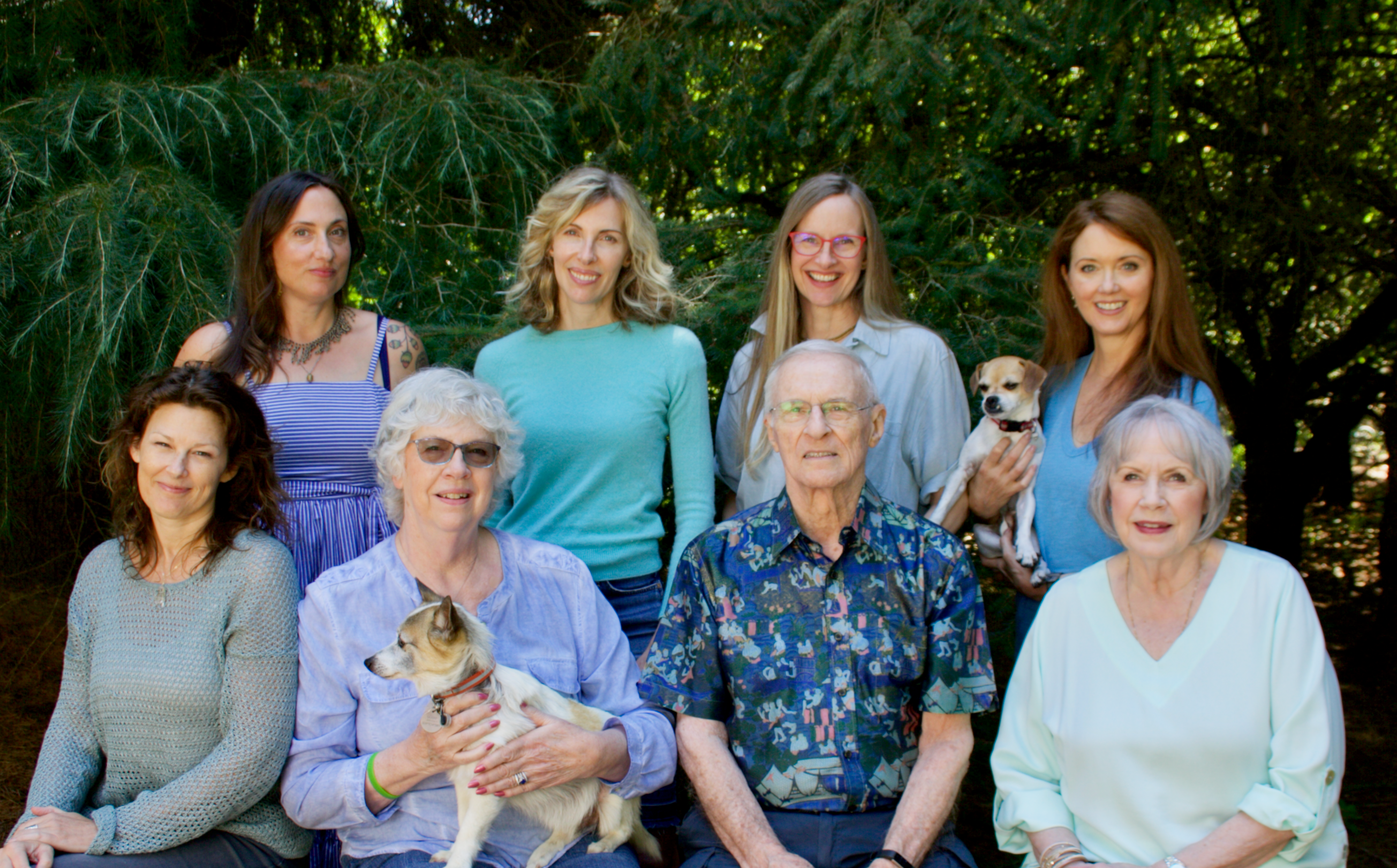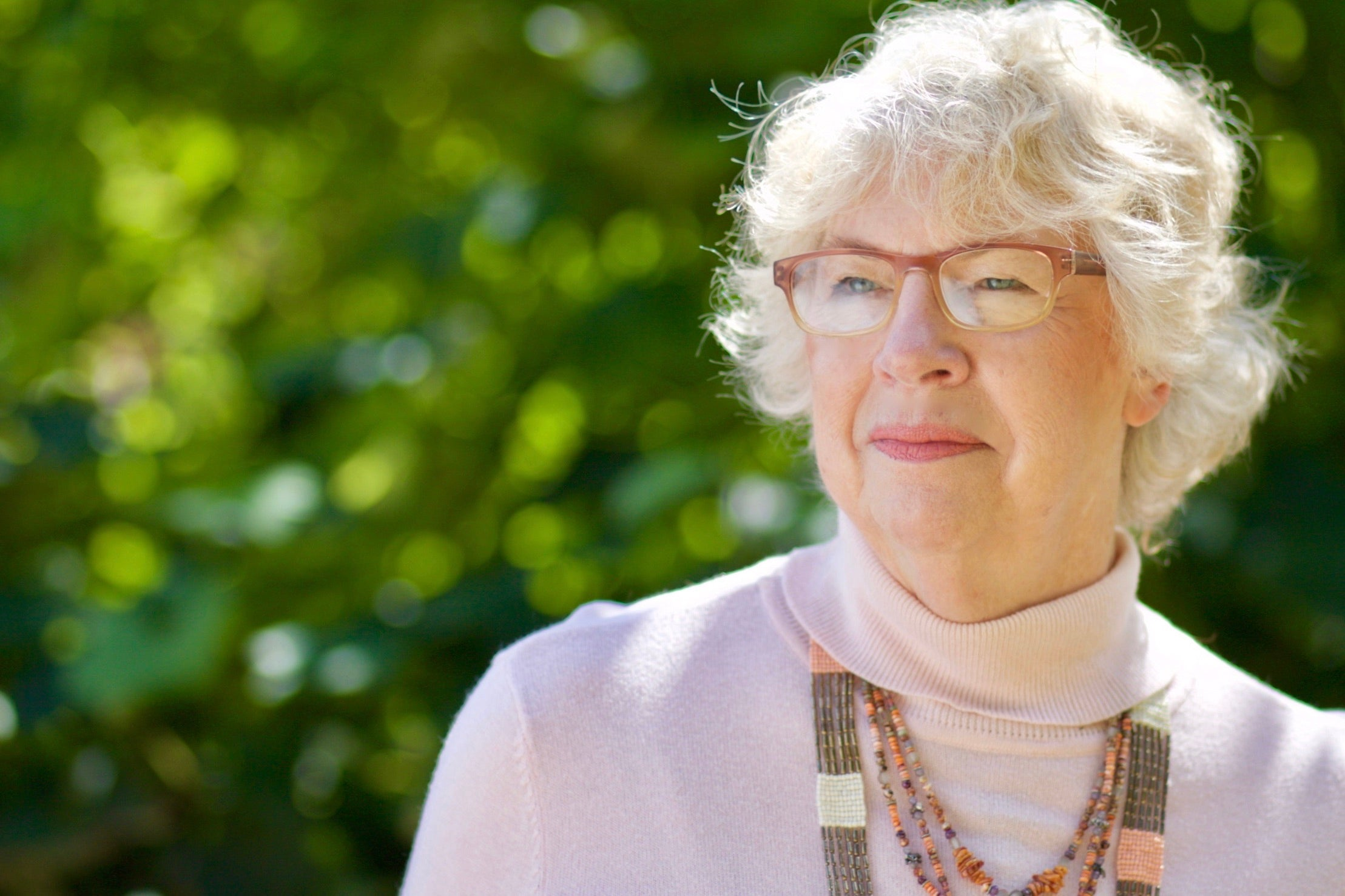When I first met Charles he was up and about although tired easily. He had cancer of the prostate and his ability to pee was affected to the point of needing a foley catheter. His biggest complaint was the limitation that having a catheter attached to him presented. Leg bags to catch the urine was an invention we had not heard of yet. Today, having a catheter would not really be a limitation. Thirty four years ago, it was.
Living with Charles was his second wife, Ella. She had a son who lived in Montana and Charles had no children. They were basically on their own, the two of them devoted to each other but with no real outside support.
Charles was outgoing, talking, sharing stories, laughing. Ella was friendly, very much in charge, and had a right way to do just about everything. They both may have been a little OCD in their personalities but it was a joy to visit and be a part of their lives.
Hospice was perfect for them. Charles had a life threatening illness, had refused further treatment, and they were alone. We were there to give them support and guidance.
Charles and Ella were part of hospice for over a year. Gradually, during that time his physical condition deteriorated. He progressed to a hospital bed in the living room where he eventually died. BUT in that year much living was done. Originally they were from Louisiana and their favorite place in the world was Hawaii. There was a lot of talk about crawfish and how no place had them like Joe’s Shack in New Orleans. So orders were shipped to Kansas City and Charles and Ella had crawfish. It was a big day when the package arrived and I was assured I'd be told when to come over and have some.
It was decided that one last trip to Hawaii was in order. Lacking a leg bag for the catheter we rigged a small briefcase to hold the bag and they flew to the Islands for a short trip.
It wasn’t always exciting activity with trips and food, although Ella was a great cook and was always fixing nibbles. She also was good at giving decorating ideas and buying/sales advice. Some days we just sat and talked. Talked about life, adventures, everyday talk. During this time they both grew deeper and deeper into my heart. They became an extension of my family as I became theirs. Charles became the father I always wanted.
As the disease progressed pain became an issue. In the early 1980’s there wasn’t a lot of knowledge of end of life pain management. The narcotic of choice was Demerol (which today we know is the least effective). At this time Elizabeth Kubler Ross introduced Brompton's Cocktail, where the patient controlled their medicine as to when and how much they took (shocking at the time). The other hospice nurse and I had just returned from a pain seminar at Northwestern University. The concept introduced there was titrating the narcotic by 10 milligram increments to reach the patient’s comfort level. Again, a pioneering concept that today is accepted and understood, then it was scary.
Ten milligrams of Morphine was the standard dosage for end of life pain but for Charles it was not having any effect so with the physician’s permission I began increasing the morphine dosage by 10mg every hour. I used the pain scale of 1 is comfortable and 10 is the most intense pain. I stayed all day and at 80 milligrams of morphine Charles was comfortable. He was alert, breathing normally and actually got out of bed to sit in his chair. I was so frightened giving that medicine. I am equating it to jumping out of an airplane, pulling the cord to open the parachute but having that moment of “will it open?” My moment was will it work and Charles not die of an overdose.
Gradually, over time, that year Charles became weaker, withdrew, stopped eating, and slept most of the time. Death drew near. Death drew near as did my vacation time. The last day before my vacation began I stopped by the house to say goodbye. I thanked him for being in my life. Hugs were given all round. I did not see him again.
Today as I think about him it is like he just took another trip to Hawaii. I did not have the closure I needed to picture him dead. Ella waited until I returned to have the memorial service but being in the cemetery garden with his smiling picture on an easel just didn’t do it for me.
Ella and I continued to have contact throughout the years. She soon moved to Montana to be close to her son. Every birthday and every Christmas I received a card and updating letter. The year I did not receive a card and my card was returned to me was the year I knew she had finally joined Charles.
This was the beginning of my knowledge of end of life pain management. I began to understand and not fear narcotics, to appreciate their power.
Charles and Ella were one of those few who became more than just people I supported and guided through life’s journey to the end.
As professionals we are taught to not get emotionally involved with our patients and yes, that is true. If we grieved deeply for every patient that died we would be working at Costco in a short time. The work would be too intense for us and we would not be able to be objective and helpful to those we are to guide. BUT we are human and every so often someone will come along that fills a personal need in us. For that person, we will grieve.
I believe death is an extension of life. Dying is our final act of living. It is a normal and natural part of what we do. Dying is very sad but it isn’t bad. I can support and guide others in this life experience and not carry their pain and loss. I do know however that occasionally someone will come along who touches me deeply and fills an empty spot within me. For those I grieve my loss. For Charles and Ella I grieve my loss.
Something More... about For That Person, We Will Grieve
My booklet, Pain At End of Life, could not have been written without those early experiences with managing pain medications. No one at end of life should ever die in pain. Hospice nurses are experts in pain management. Families need education on the differences in narcotic use with the dying vs. with those who will get better. This is the booklet for them.








12 comments
Nancy Forrester
On my goodness, how poignant a story….one that resonates with me. I have a relevant story – My heart was touched in August 2020 by a patient and his wife. He died two days after coming onto our hospice service (I am a hospice chaplain in South Carolina and Georgia but originally from Maine, so know Hospice of Southern Maine). Five months later one of the sisters of the widow’s wife died from her cancer, and on April 1, a week ago, one of the daughters of the widow died from her cancer at age 45. The widow, I will call her Dawn, touched my heart and we connected in a way that met needs for both of us – laughter, sharing family of origin stories, dog and cat stories, and swearing, among other inspiring conversations. There is more to the story, but we are not connected now and have not been for almost 2 months. I did take in her grief earlier and that was a surprise and very painful and sad for me to feel grief that really was not my own. Our abrupt severing of what I have realized really wasn’t friendship in reciprocal give and take – that fact was hidden behind a mask from me for awhile – actually helped me not take on her grief with the death of her daughter. All that being said, your story was helpful healing for me and acknowledgement of the power of crossing those lines that inevitably happen because our hearts are tugged towards love and by love, regardless of professional boundaries. I recently watched your videos “Dynamics of Dying” and was profoundly touched and energized by the spiritual energy that answered numerous unasked questions on my part. Blessings to you, Barbara, and many thanks for your good works.
Peace, Nancy
On my goodness, how poignant a story….one that resonates with me. I have a relevant story – My heart was touched in August 2020 by a patient and his wife. He died two days after coming onto our hospice service (I am a hospice chaplain in South Carolina and Georgia but originally from Maine, so know Hospice of Southern Maine). Five months later one of the sisters of the widow’s wife died from her cancer, and on April 1, a week ago, one of the daughters of the widow died from her cancer at age 45. The widow, I will call her Dawn, touched my heart and we connected in a way that met needs for both of us – laughter, sharing family of origin stories, dog and cat stories, and swearing, among other inspiring conversations. There is more to the story, but we are not connected now and have not been for almost 2 months. I did take in her grief earlier and that was a surprise and very painful and sad for me to feel grief that really was not my own. Our abrupt severing of what I have realized really wasn’t friendship in reciprocal give and take – that fact was hidden behind a mask from me for awhile – actually helped me not take on her grief with the death of her daughter. All that being said, your story was helpful healing for me and acknowledgement of the power of crossing those lines that inevitably happen because our hearts are tugged towards love and by love, regardless of professional boundaries. I recently watched your videos “Dynamics of Dying” and was profoundly touched and energized by the spiritual energy that answered numerous unasked questions on my part. Blessings to you, Barbara, and many thanks for your good works.
Peace, Nancy
barbara karnes
Hi Monika, I am so sorry for the experience you had when your husband entered the hospital, was admitted to hospice and then died. No words can ease the horror you experienced. I hope you told the hospital and hospice what happened. They need to know. It is an opportunity for them to make changes, to provide better care in the future. Talking to them won’t change what happened to you but maybe, just maybe, those that follow you will benefit with more sensitive care. Blessings! Barbara
Hi Monika, I am so sorry for the experience you had when your husband entered the hospital, was admitted to hospice and then died. No words can ease the horror you experienced. I hope you told the hospital and hospice what happened. They need to know. It is an opportunity for them to make changes, to provide better care in the future. Talking to them won’t change what happened to you but maybe, just maybe, those that follow you will benefit with more sensitive care. Blessings! Barbara
Althea Halchuck
Dear Barbara,
Thank you for your wonderful story. I love hearing about the way things were when hospice care was new and you were feeling your way. I have been a volunteer for over 15 years and there are just some patients who climb into your heart and never leave. A few times I was cautioned that I was getting “too close.” The heart knows what the heart knows and I follow my heart. Feeling grief for a certain patient or ten makes us human. I can only hope that my special patients felt the same about me when they went to the other side. Bless you for being such an inspiration…
Dear Barbara,
Thank you for your wonderful story. I love hearing about the way things were when hospice care was new and you were feeling your way. I have been a volunteer for over 15 years and there are just some patients who climb into your heart and never leave. A few times I was cautioned that I was getting “too close.” The heart knows what the heart knows and I follow my heart. Feeling grief for a certain patient or ten makes us human. I can only hope that my special patients felt the same about me when they went to the other side. Bless you for being such an inspiration…
Vultee
I lost my husband of 58 years on Sept 22 2020. After 24 hrs in Er not spoke to a Dr. doc doc service came in and told me he should go to hospice which I did in shock.my husband had dementia since 1981 never progressed. The hospice was a nightmare no help.I call it now death camp.no kind word nothing all alone
I lost my husband of 58 years on Sept 22 2020. After 24 hrs in Er not spoke to a Dr. doc doc service came in and told me he should go to hospice which I did in shock.my husband had dementia since 1981 never progressed. The hospice was a nightmare no help.I call it now death camp.no kind word nothing all alone
barbara karnes
Hi Johnny, thank you for sharing about your wife’s last months, weeks and days. You mentioned you were asleep when she actually took her last breath. When we are dying we have limited control over the time that we die. We often wait until the person we love is asleep or out of the room to take our final breath as a way of protecting them from that final goodbye.
My husband and I have been married 59 years so I can image the empty space left by your wife’s death. You might write her a letter. Put all your love for her, your thoughts and feelings about your 51+ years together. Write from your heart , let the words and the tears flow then burn the letter. Since you are visiting her frequently sprinkle the ashes upon her grave.
I will hold you in my thoughts. Blessings! Barbara
Hi Johnny, thank you for sharing about your wife’s last months, weeks and days. You mentioned you were asleep when she actually took her last breath. When we are dying we have limited control over the time that we die. We often wait until the person we love is asleep or out of the room to take our final breath as a way of protecting them from that final goodbye.
My husband and I have been married 59 years so I can image the empty space left by your wife’s death. You might write her a letter. Put all your love for her, your thoughts and feelings about your 51+ years together. Write from your heart , let the words and the tears flow then burn the letter. Since you are visiting her frequently sprinkle the ashes upon her grave.
I will hold you in my thoughts. Blessings! Barbara
barbara karnes
Hi Meg, thanks for your comment on my blog post. Your comment “ they wouldn’t be able to do their jobs if they allowed themselves to get “emotionally” involved led me to think you can be gentle and compassionate in how you interact with people without being emotionally involved. Some professionals come across harsh, distant and utilize a medical professional mask to cover any hint of gentleness and compassion that as a human being they may feel. I’m not saying we should wear our heart on our sleeve for all to see but I am saying we need to be aware of our heart beating beneath our shirt.
Blessings to you Meg in all that you do. Barbara
Hi Meg, thanks for your comment on my blog post. Your comment “ they wouldn’t be able to do their jobs if they allowed themselves to get “emotionally” involved led me to think you can be gentle and compassionate in how you interact with people without being emotionally involved. Some professionals come across harsh, distant and utilize a medical professional mask to cover any hint of gentleness and compassion that as a human being they may feel. I’m not saying we should wear our heart on our sleeve for all to see but I am saying we need to be aware of our heart beating beneath our shirt.
Blessings to you Meg in all that you do. Barbara
Johnny Sulfridge
I just experienced the EOL with my wife, Poo bear, Honey and my loved comrad for 51+ years. Diagnoised with leukemia that started as gout, treated with medication and chemo initially and with no success the doctor issued theEOL to us with days to several weeks before I lost my sole mate of 51+ years. I sat with her for near 6 weeks (last 2 weeks as EOL. I watch my love deterioate each day knowing that I was helpless in helping when she was yelling for help. The Dr. kept her at hospital as comfort care patient with morphine frequently given. I was there with her to the end.She left me in sleep and my napping at 530am. That was a month ago today. The last 2 days she was placed as in house hospice care within hospital. They provided me a copy of your booklet “Gone from My Sight”. Unfortunately I did not get to read until after she passed. All I can say from your book, 99% of your description of months, weeks, days, and to hours of being with her prior to her heavenly journey, I lived to see the changes. Until the last several days was able to speak some and asking the phrase, Let me die! She kept reaching for Mom! When I ssked about Mom, all she could do was move her head up&down for yes and/or left to right for no. She could hear me but could not see me,I’m pretty sure. I said to her that I loved her so much and she nodded affirmative. I truly MISS HER! And I visit her almost every other day at the cemetary for a conversation.
God bless you for your years of extensive research.
I just experienced the EOL with my wife, Poo bear, Honey and my loved comrad for 51+ years. Diagnoised with leukemia that started as gout, treated with medication and chemo initially and with no success the doctor issued theEOL to us with days to several weeks before I lost my sole mate of 51+ years. I sat with her for near 6 weeks (last 2 weeks as EOL. I watch my love deterioate each day knowing that I was helpless in helping when she was yelling for help. The Dr. kept her at hospital as comfort care patient with morphine frequently given. I was there with her to the end.She left me in sleep and my napping at 530am. That was a month ago today. The last 2 days she was placed as in house hospice care within hospital. They provided me a copy of your booklet “Gone from My Sight”. Unfortunately I did not get to read until after she passed. All I can say from your book, 99% of your description of months, weeks, days, and to hours of being with her prior to her heavenly journey, I lived to see the changes. Until the last several days was able to speak some and asking the phrase, Let me die! She kept reaching for Mom! When I ssked about Mom, all she could do was move her head up&down for yes and/or left to right for no. She could hear me but could not see me,I’m pretty sure. I said to her that I loved her so much and she nodded affirmative. I truly MISS HER! And I visit her almost every other day at the cemetary for a conversation.
God bless you for your years of extensive research.
Judy A Brennan
Barbara, what a heartfelt story you shared. You gave so much of YOU to this couple. I’m sure they are watching over you. Much love, Judy
Barbara, what a heartfelt story you shared. You gave so much of YOU to this couple. I’m sure they are watching over you. Much love, Judy
Meg Baer
Ahhhh.. Barbara, what a fabulous narrative. I am the hospice worker who sheds tears. A small and short cry and then onto my next patient. I unfortunately also worked a few times with nurses who were cold and could be irritable
and even nasty. I knew a couple of physicians
that were like that too. I still wonder why that personality type goes into our field in the first place. I’ve been told that they wouldn’t be able to do their jobs if they allowed themselves to get “emotionally “ involved.
Ahhhh.. Barbara, what a fabulous narrative. I am the hospice worker who sheds tears. A small and short cry and then onto my next patient. I unfortunately also worked a few times with nurses who were cold and could be irritable
and even nasty. I knew a couple of physicians
that were like that too. I still wonder why that personality type goes into our field in the first place. I’ve been told that they wouldn’t be able to do their jobs if they allowed themselves to get “emotionally “ involved.
Mary Ann Christensen
Great article! I am still friends with the wife of my hospice patient. We both still grieve his loss and find comfort in talking with each other.
Great article! I am still friends with the wife of my hospice patient. We both still grieve his loss and find comfort in talking with each other.
A.J. Smith
Marty Tousley
Your contributions to our world are priceless, dearest Barbara, and those of us who work in hospice (along with our patients and families) are blessed to have learned so much from you . . .
Your contributions to our world are priceless, dearest Barbara, and those of us who work in hospice (along with our patients and families) are blessed to have learned so much from you . . .